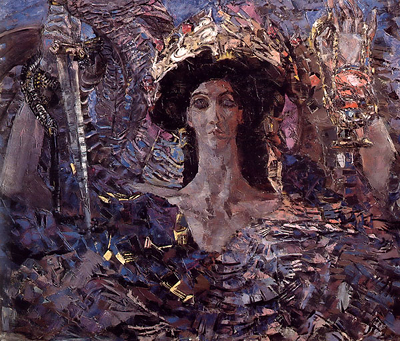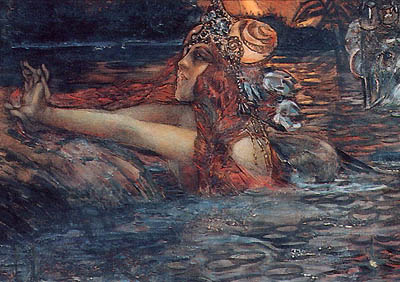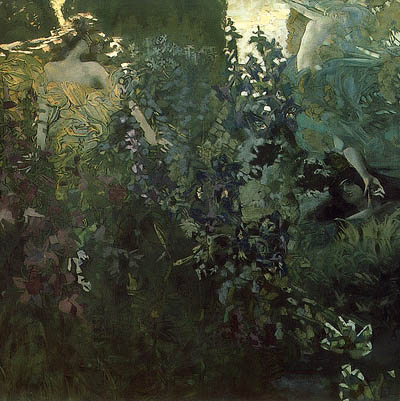Vrubel’s Enigmatic Art Nouveau
Mikhail Vrubel is not particularly well-known in the West but he remains one of the greatest and certainly one of the most unique artists Russia’s ever produced. Most of his best-known work is inspired by fairy tales and poetry, and his own life was a sort dark fable in itself.

The Swan Princess (the artist’s wife)
Born in Siberia, Mikhail lost two of his siblings when he was still a child. Their untimely deaths affected him deeply, but didn’t stop him from developing his talent for drawing, among other widely varying interests. His family encouraged his interest in the arts and languages and in 1864 he began to study in St. Petersburg where he was educated in both law and art.

Six-Winged Seraph Azrael
Over the next 25 years he lived in both St Petersburg and Moscow, and worked in many mediums. Most notably, he developed a painting style which was often aligned with the Symbolist and Nouveau styles, and both loved and hated even in his lifetime. His works in oil look almost as if they were cut from stone, with multitudes of facets, thick strokes of color and black sharp shadows, but still very much alive and emotionally charged. Among these works were illustrations to a brooding poem by Mikhail Lermontov called “Demon”. Some huge in scale, these paintings and drawings won Vrubel, who seemed very affected by the poem, much attention and public reaction. The real extent to which Demon influenced Vrubel was not entirely apparent at that time.

Princess parts with the Sea King
Despite some scathing criticism, Vrubel won the patronage and friendship of Savva Mamontov who helped him develop a clientèle around Moscow, where he created most of the work showcased in this article. He was infatuated with the magical themes of Russian folklore, on which many popular operas of the time were based. In 1896 Mikhail fell madly in-love with a beautiful opera singer Nadezhda Zabela. Nadezhda performed parts of swan princesses and enchanted maidens. They married and moved to Moscow where his life was likely at its fullest, with Nadezhda as his ultimate muse. She sang in Mamontov’s private opera for which Vrubel designed sets along with stage costumes and dresses for his new wife. He painted many portraits of her and soon they had a son named Savva, after their dear friend and patron.

Morning
Just a few years into their marriage and newfound bliss, something made him return to the Demon theme. The work Mikhail Vrubel created for this poem stands apart from everything else he ever did, and will receive separate attention here, later.

Pan

November 24th, 2007 at 5:01 pm
I love Vrubel so much!! His paintings are amazing in person. Last time I was in Russia, I was completely entranced. I saw his images a the Tretyakovka which, I heard, suffered some sort of fire. But yeah, he’s the shit! A totally under-appreciated and awe-inspiring artist. I love this image.
November 24th, 2007 at 5:55 pm
Wow. This is amazing. I was completely unfamiliar with his work until now.
November 24th, 2007 at 8:35 pm
*insert Jerem’s usual praise und thanks*
November 24th, 2007 at 11:24 pm
Russia seems to produce the most amazing artists that go unnoticed.
Thanks for introducing him to those of us who have yet to see his wonderful work.
November 25th, 2007 at 12:47 am
p.s. I don’t seem to be able to find this avatar uploading bit.
November 25th, 2007 at 2:46 am
I love him… I discovered him in an exhibition about Russian Symbolism in Barcelona, which so amazing… fortunately they had a catalog.